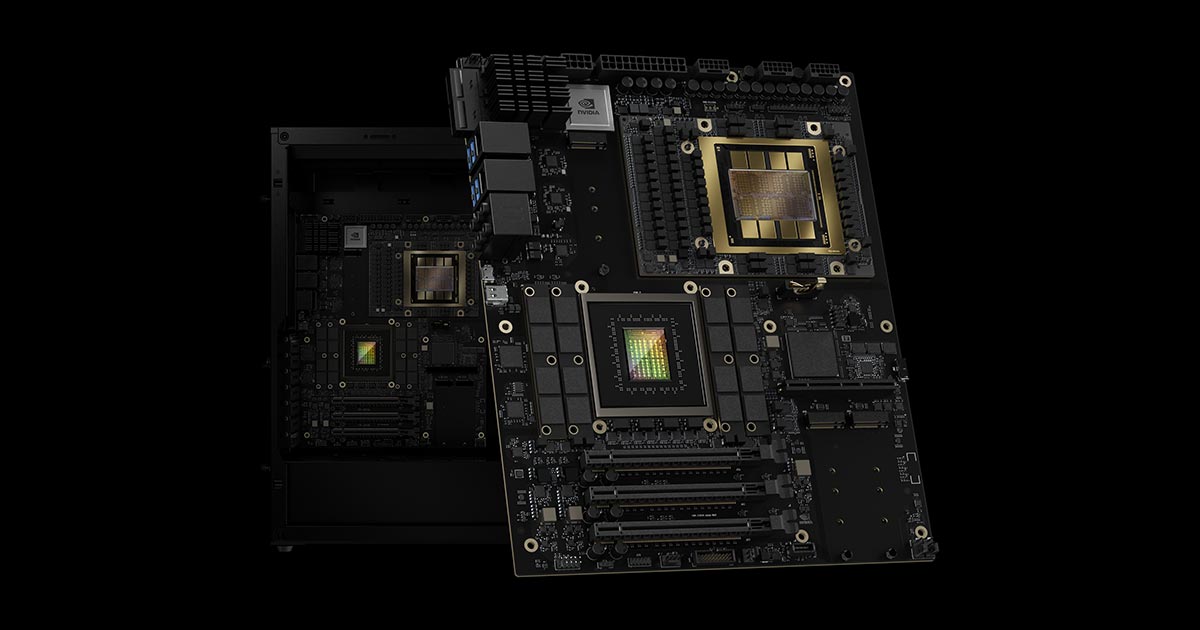NVIDIA has just revealed two desktop AI supercomputers, the DGX Spark and DGX Station, aiming to put immense computing power directly into the hands of developers, researchers, and data scientists. The announcement, made at the NVIDIA GTX keynote by CEO Jensen Huang, signals a significant push towards democratizing advanced AI development. These new machines, powered by NVIDIA’s Grace Blackwell platform, are designed to handle demanding AI workloads locally, bridging the gap between personal workstations and cloud-based supercomputing.
The DGX Spark, formerly known as “Project DIGITS,” is available for preorder immediately, with shipments expected to begin in the summer. The DGX Station, a more powerful workstation, will be available later this year through various manufacturing partners, including ASUS, BOXX, Dell, HP, Lambda, and Supermicro.
DGX Spark: The Compact AI Supercomputer
NVIDIA touts the DGX Spark as the world’s smallest AI supercomputer. This compact machine packs considerable processing power, delivering up to 1000 trillion operations per second (TOPS) of AI compute at FP4 precision, thanks to the NVIDIA GB10 Grace Blackwell Superchip. This superchip integrates a Blackwell architecture GPU with fifth-generation Tensor Cores. It also features 20 Arm CPU cores (10 Cortex-X925 and 10 Cortex-A725).
Equipped with 128 GB of unified LPDDR5X memory and up to 4 TB of NVMe storage, the DGX Spark allows users to work with AI models containing up to 200 billion parameters directly on their desks. The unified memory architecture, facilitated by NVIDIA’s NVLink-C2C interconnect technology, provides five times the bandwidth compared to fifth-generation PCIe, ensuring swift data access between the CPU and GPU.
The DGX Spark also features NVIDIA ConnectX-7 SmartNIC, offering 10 GbE Ethernet connectivity and the capability to connect two DGX Spark systems for even larger AI models, up to 405 billion parameters. For wireless connectivity, it includes Wi-Fi 7 and Bluetooth 5.3. Despite its power, the DGX Spark consumes only 170W. Its small size, measuring 150mm x 150mm x 50.5mm and weighing just 1.2 kg, makes it a truly personal AI powerhouse.
The DGX Spark comes pre-installed with NVIDIA’s full-stack AI platform, which includes tools, frameworks, libraries, and pre-trained models, simplifying the workflow for prototyping, optimizing, and iterating on AI models. This platform allows developers to seamlessly transfer their models to NVIDIA DGX Cloud or other accelerated cloud infrastructures with minimal code modifications. The starting price for the DGX Spark is around $3,000.
DGX Station: Data Center Performance on Your Desktop
For users needing even greater computational muscle, NVIDIA introduced the DGX Station. This workstation brings data center-level performance to desktop AI development. It is the first system built with the NVIDIA GB300 Grace Blackwell Ultra Desktop Superchip. This chip combines a Blackwell Ultra GPU with the latest-generation Tensor Cores and FP4 precision, connected to a high-performance NVIDIA Grace CPU via NVLink-C2C.
The DGX Station boasts a massive 784 GB of coherent memory, comprising 288 GB of HBM3e memory for the GPU and 496 GB of LPDDR5X memory for the CPU. This substantial memory capacity enables the acceleration of intensive training and inference tasks on large-scale AI models.
Networking capabilities are further enhanced with the inclusion of the NVIDIA ConnectX-8 SuperNIC. This card supports networking speeds of up to 800 Gb/s, facilitating rapid and efficient data transfers and enabling high-speed connections between multiple DGX Stations for tackling even larger workloads.
NVIDIA has not yet disclosed the exact specifications or pricing for the DGX Station, but it is clear that this machine targets professionals who require the highest level of desktop AI performance.
Bridging the Gap and Empowering AI Development
Jensen Huang emphasized the significance of these new personal AI computers. He stated that AI has transformed every layer of computing, making it logical for a new class of computers designed specifically for AI-native developers and applications to emerge. With DGX Spark and DGX Station, NVIDIA aims to extend AI capabilities from cloud services to individual desktops and edge applications.
The ability to prototype, fine-tune, and perform inference on large AI models locally offers several advantages. It reduces reliance on constant internet connectivity and can accelerate the development cycle by allowing for quicker experimentation and iteration. Researchers, data scientists, robotics developers, and students can now access advanced AI capabilities without the need for extensive cloud resources.
NVIDIA’s strategy with these new products appears to be focused on providing a comprehensive ecosystem for AI development. Users can start their work on a DGX Spark or DGX Station and then seamlessly scale their projects to the DGX Cloud or other compatible infrastructures when needed. This flexibility makes it easier than ever to move from initial experimentation to large-scale deployment.
The announcement of DGX Spark and DGX Station marks a significant step in making powerful AI computing accessible to a wider audience. By offering desktop machines with supercomputing capabilities, NVIDIA is empowering individuals and small teams to push the boundaries of AI research and development. The availability of DGX Spark for preorder suggests a strong demand for such personal AI powerhouses, and the upcoming release of the DGX Station promises to further solidify NVIDIA’s position at the forefront of AI computing.













